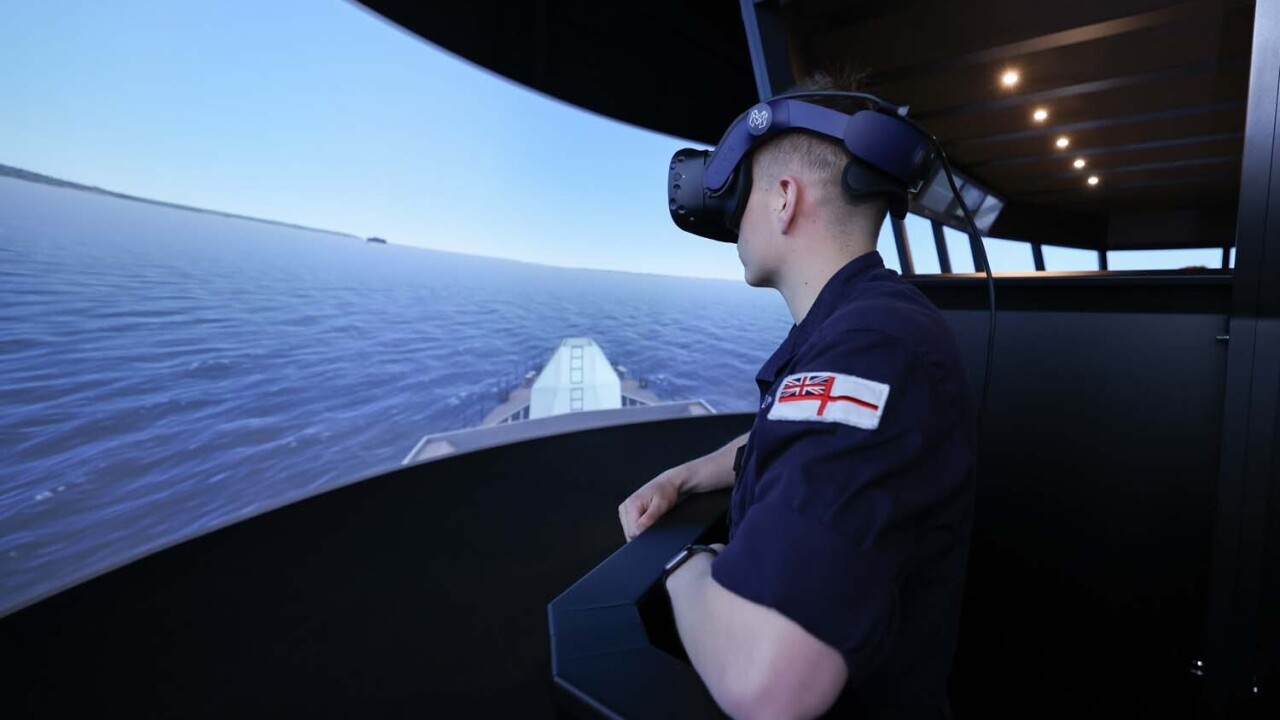
The Royal Navy has installed VR simulators at three military training sites in the UK.
The simulators, built by Portsmouth-based Metaverse VR, recreate the bridge of a warship. A bridge, or wheelhouse, is like an aeroplane cockpit for ships.
The Navy hopes that the new simulators will make training sailors faster and more lifelike.
“You feel like you are stepping onto the bridge of a warship,” said Stephen Smallman, 28, a trainee warfare officer. “It is very easy to become immersed in the situation – it makes everything feel much more real.”

The Royal Navy has been using digital bridge simulators for decades, but these rely on technology from the early 2000s. “The old simulator was good, but you knew you were in a room with some screens,” said Smallman.
The Navy has installed five of the VR simulators at HMS Collingwood, a warfare school in southern England. This includes two large “full-mission” units fitted with wraparound digital displays. The other three simulators are smaller versions, more like a video gaming set-up.
‘A game-changer’
When sailors put on the VR headsets, they become immersed in a 3D world. They can peer over the side of the virual boat and look down at the waves crashing against the hull.
Trainees can manoeuvre the ship and practice scenarios like resupply missions or mooring at harbour. They can also adjust the weather, for instance, to practise in rough seas but without the real-world dangers.
Sailors and their mentors can record all training scenarios and replay them afterwards.

“The new simulators are fantastic and the debriefing – allowing us to accurately run through what’s just happened – is a game-changer when it comes to training navigators and bridge teams,” said Lieutenant Commander Gavin Lowe. The Lieutenant was among the first trainees to go use the first-generation simulators two decades ago.
The other four VR simulators have been divided between the Britannia Royal Naval College in Dartmouth and a new naval facility in Faslane, Scotland.
The Royal Navy spent £27mn (€31mn) on the new tech.
The simulators join an arsenal of state-of-the-art defence equipment deployed by the Navy. These include autonomous minehunters and electronic warfare systems. The Navy might even install DragonFire laser weapons on its ships from 2027.
Get the TNW newsletter
Get the most important tech news in your inbox each week.





